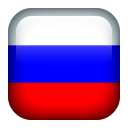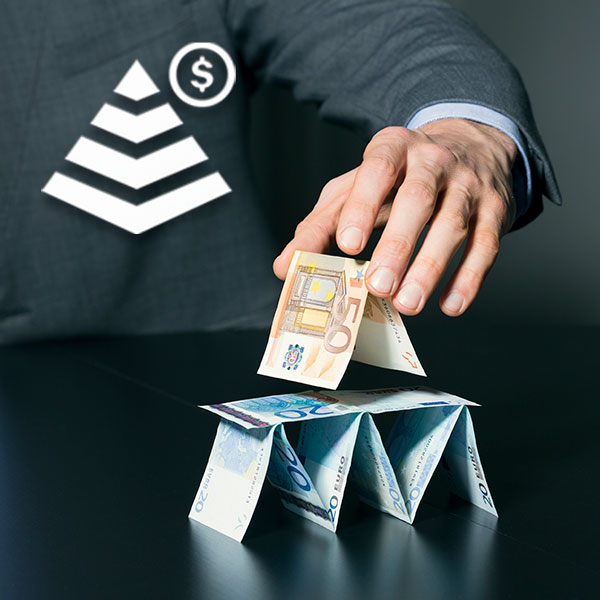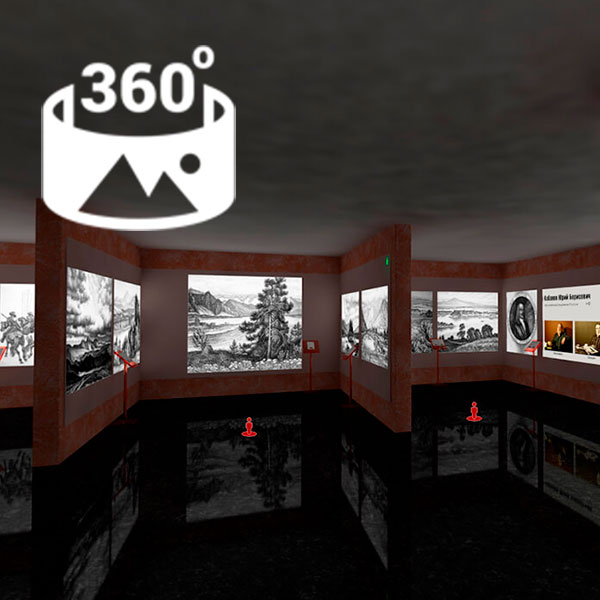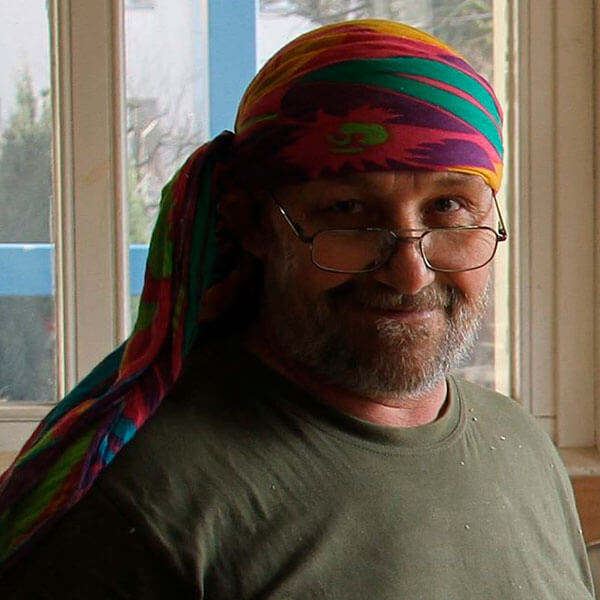
Andrey Bitter
Interview with a wonderful person, artist, author of numerous fabulous art works. The interview was taken in 2016 for the museum website, this is a collaboration with Andrey Bitter. (Text edited by A. Bitter)
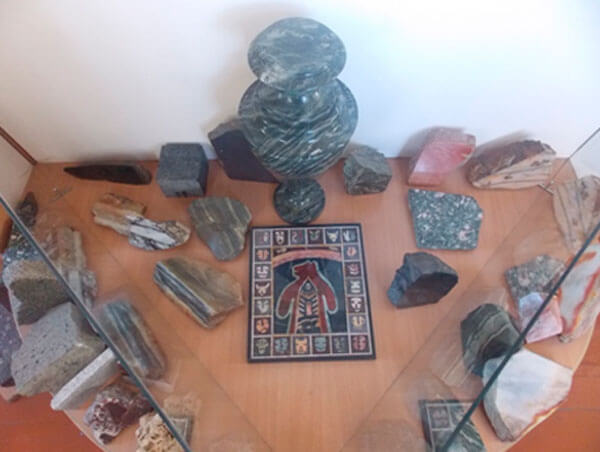
An interesting and mysterious object is presented in the exposition “Products of the Ivan Ivanovich Polzunov Kolyvan Stone Cutting Plant” in the museum «History of the development of mining industry named after Akinfiy Demidov» in the city of Zmeinogorsk, Zmeinogorsk District of Altai Territory. He interested many visitors to the museum with its mystery and something mystical, this exhibit raises many interesting questions.
This Florentine mosaic has been featured in many works and articles about the museum. The exposition of the Kolyvan Stone-Cutting Plant displays the history of both the plant itself and its products. A special place is given to the history of the manufacture of the «Queen of Vases», carved at this plant from green-wavy jasper from the Revnevsky deposit. We can say that the Florentine mosaic is one of the most striking exhibits reflecting the art of the masters of the Kolyvan Stone Cutting Factory (KSCF) of the 1990s. The author of the mosaic is the chief artist of KSCF 1988-1994. Andrey Bitter. The master-cutter Vasily Svetochev (a resident of the village of Kolyvan) put together a mosaic in stone.
Only the author of the mosaic can tell the best about this piece of art. Only the author can tell us about his ideas, and what inspired him to such an interesting mosaic project. We are corresponding with Andrey Bitter, and we asked him to tell us about the mosaic:
Andrey, please tell us briefly about yourself:
I, Andrei Andreevich Bitter, was born in the Siberian taiga village of Troitsk, Bauntovsky district, Buryat-Mongolian Autonomous Soviet Socialist Republic on January 6, 1952. This is beyond Baikal. Where fate brought the Volga Germans, my parents, to the Labor Army for timber felling and gold mining from 1947 to 1957. Geological exploration «Barguzin-gold», mines in the villages of Tsipikan, Upper Tsipikan, Troitsk. After the well-known decision on rehabilitation, and the removal of the commandant’s supervision, our family moved from Troitsk to the Altai Territory to the station Zariskaya, st. Stepan Razin house number 45. Here I graduated from high school. From 1970 to 1972 I served in the Soviet Army.
In 1972, I entered the Novoaltaisk Art School, after three years of study I left the school and entered the Leningrad Art and Industrial School named after Vera Mukhina at the Faculty of Industrial Design (Now it is called the St. Petersburg Art and Industry Academy named after A.L.Stieglitz).
I defended my diploma in 1981. Pre-graduation collective project: Integrated design solution for the interior of the Central Office of Space Flight (CSF). This project included everything: special clothing, furniture, consoles with all monitors and controls. Thesis: Comfortable dacha-trailer for a car of the «Niva» model.
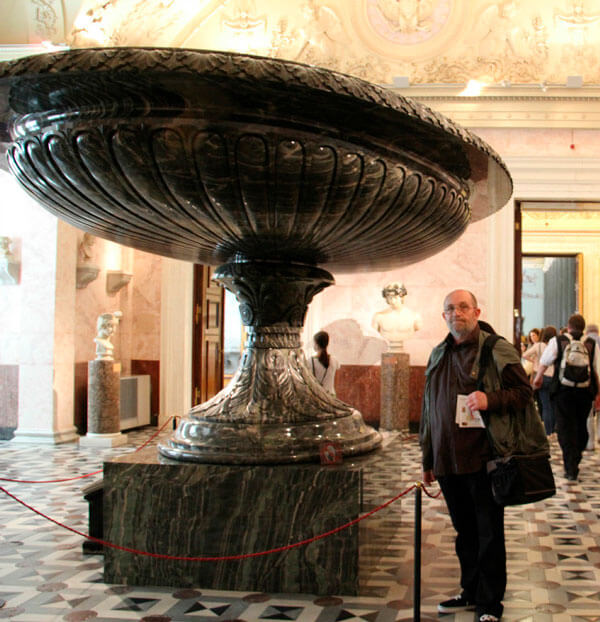
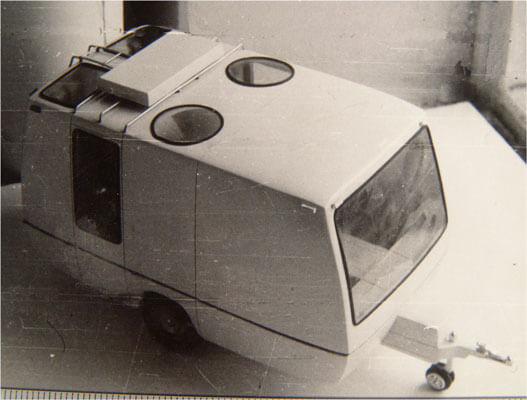
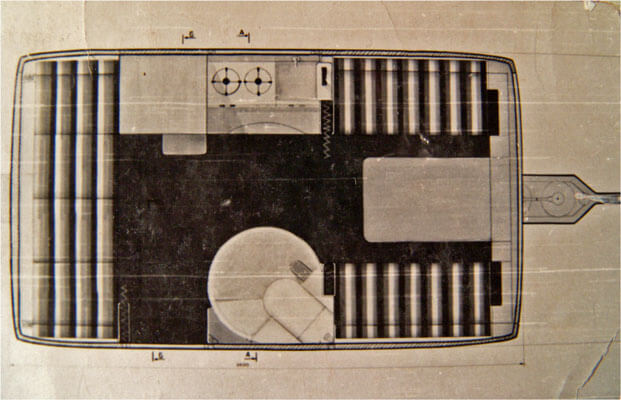
After defending my diploma, I worked as the chief artist of the city of Zarinsk until 1989, after which I was invited as the chief artist to the Kolyvan stone-cutting plant. I lived in the city of Barnaul and in the village of Kolyvan.
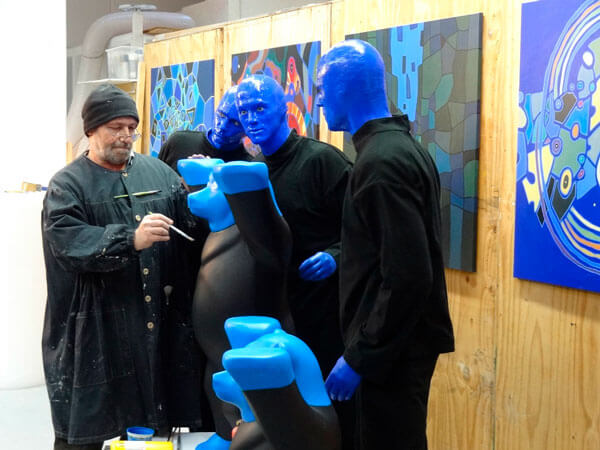
In 1996, due to kidney disease, I moved to live in Berlin. I have been living and working with an artificial kidney for the ninth year. Since 2001 I have been working as the main painting artist for the famous plastic Berlin bears — the heraldic symbol of Berlin. I work in partnership with the company «Bуddy Bär Berlin GmbH«. Since 2002 I have been participating in the international charity project «UNITED BUDDU BEARS«. More than 30 exhibitions have been held in major cities and capitals of the world, on all 5 continents. More than 800 orders have been completed, including the design of international events, such as the Summer Olympic Games in Athens in 2004, in Beijing in 2008, the FIFA World Cup in Berlin in 2006, and in Greece in 2010. Member of the Union of Artists of Russia and Germany.
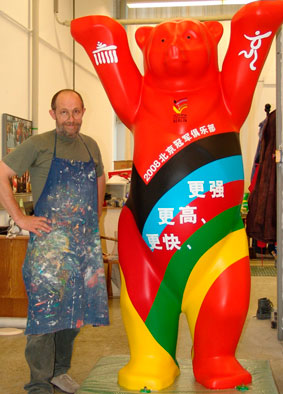
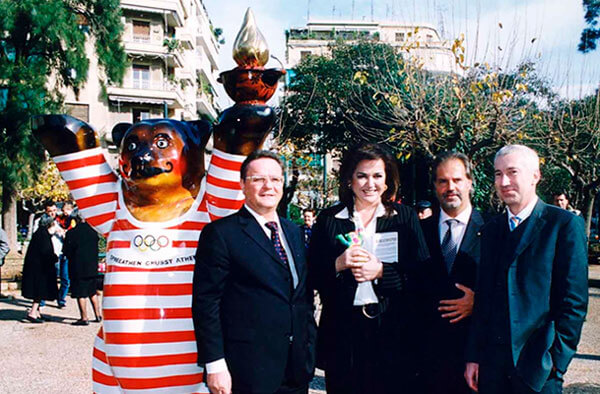
Andrey, tell us your idea in the "Spirit - Master of Taiga" mosaic
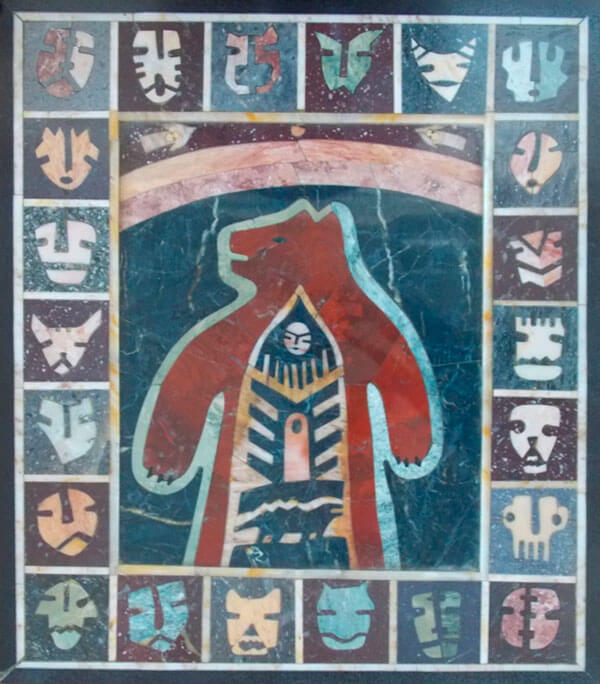
In this case, the «BEAR» is depicted — the master of the taiga, against a dark blue-green background, against the background of space, against the background of the World Space, against the background of a dense taiga forest. Inside the Bear, the World Tree is a world representation of Siberian shamanism in the form of three worlds: upper, middle and lower. The upper world depicts the «SPIRIT-BIRD«, an idol with a human face, taking the human soul to the higher worlds. In the middle world, a «SPIRIT-TREE» is depicted with the image of a humanoid figure, a shaman, a stone woman, an idol. In the lower, otherworldly world «SPIRIT-DEATH» in the form of a predatory beast, dragon, lizard.
The arcs above the bear are the layers in which the gods and spirits lived. The space in which the shaman communicated with the spirits during the ritual. Each layer had its own level — values. I have three spheres, two birds in the upper sphere.
(It seems that there should be 7 tiers of worlds inhabited by spirits … I read about this in the book (purchased at that time in the city of Barnaul) «Perm Animal Style» ed. 1988 V.A. Oborin, G.N. Chagin. Permian, Scythian-Siberian, Scythian-Sarmatian animal styles covered a large territory including Northeastern Europe, the Urals, Siberia, Western Siberia, Altai …)
The frame is made with the image of the skulls of sacrifices: people, animals, animals, birds … The frame is an altar … archaeologists often find calculations laid out of bones (skulls and bones of the legs, including the remains of human sacrifices).
There was an idea to make a Shaman in this way. A frame for him with various stylized figures of animals, birds, people, which were hung on the clothes of a shaman.
It is important in my work not to perceive the exact illustration of scientific data, descriptions, they are different everywhere. I, relying on my knowledge of the time, intuitively passed this through myself, a modern person, a Christian. Moreover, there was a mixture of paganism and Christianity in the Altai region; this, I think, is the topic of scientific research, archaeologists, historians, art historians. I consider this work successful first of all because it gives off a sense of mystery, the sacred spirit of paganism, animal style … If I can put it this way, the shock is similar to how «stone women» (stone idols) affect you when you are not in a museum, but in the mountains when you are standing in front of a stone IDOL ONE ON ONE.
The initial project looked like this:
It was extremely difficult to execute such a project in a small stone, therefore, a lot had to be changed. First of all, I was not satisfied with the composition, such as the icon of the saint and his life. And here subconscious interventions of Christian details take place … which is natural, I am a Christian, and I know the icon very well. The new project was lost somewhere at the factory. Recently I was informed that the director of the Kolyvan Museum had found some sketches. What sketches were found, I do not know yet.
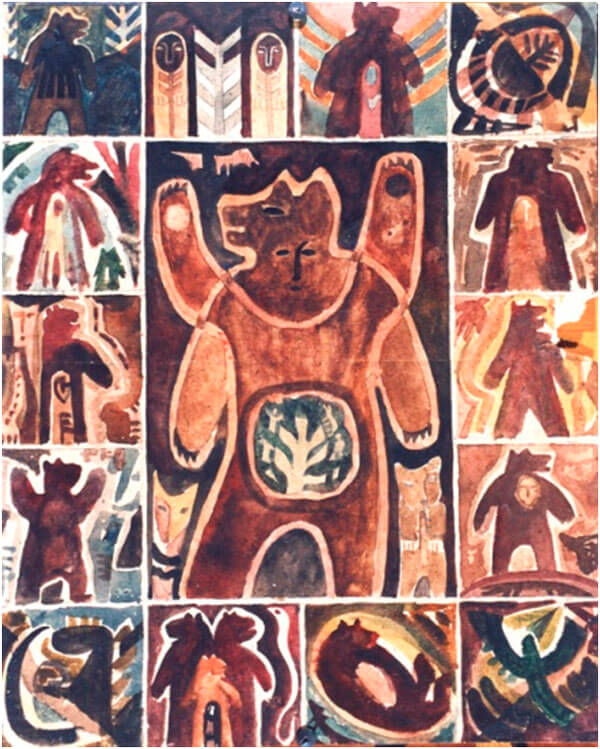
Andrey, where else can you see the artwork made by you and what kind of works they are?
On the theme of pagan rituals, pre-Christian folklore, the following chamber compositions made in stone in the style of «Florentine mosaics» by Andrei Bitter: «Sirin«. «Griffin» — (guardian of the treasures of the mountains), «Griffin with a rider» «Costumed«, «Street theater«, «The man and the bear«, «Mummers«, «Hunter and Witch«, «Disguised with accordion» » Trinity. A man, a bear and a mummer«, «Kolyada» and others … (can be seen on my pages on the Internet):
Here you can see more than 1000 photos of my work.
By the way, in Odnoklassniki I have an album „KOLYVAN, AROUND YES NEAR“ there are a number of my projects and ready-made mosaics.
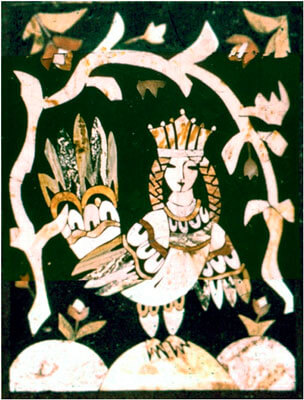
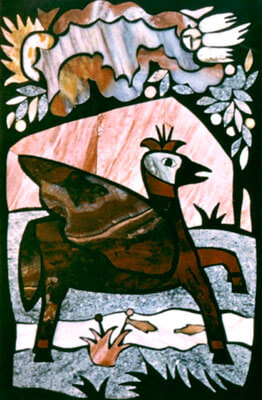
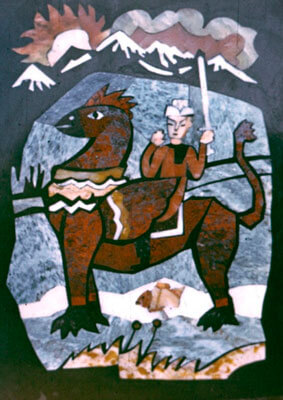
Andrey, how did life connect you with the Kolyvan Stone Cutting Plant?
At the Kolyvan Stone-Cutting Plant, which was owned at that time by the «Regional Department of Communal Services», I was offered to work as the chief artist, I refused the post, wanting to remain a free artist. I explained it this way: — You need an artist, give me a job, and I will earn my own bread. They trusted me, and I did whatever I thought was necessary in my creative quest.
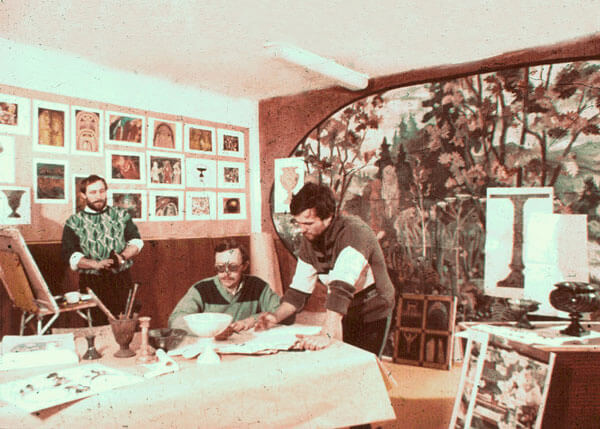
The transfer of the Kolyvan Stone Cutting Plant from the subordination of the «Ministry of Local Industry» to the subordination of the «Regional Communal Services» is a separate story in which I was directly involved, albeit indirectly.
Much for me was a matter of chance. The Altai art plant, where I worked, received an application for the execution of a «Roman» mosaic measuring 3.5 x 6 m on the facade of the Ob sanatorium. I received this order. As expected, I met with the customer, and it turned out that they needed a «Florentine» mosaic in the banquet hall too.
I got down to work with great pleasure, suspecting nothing. The Fund has given a good order, I must fulfill it. The theme for the banquet hall was immediately determined: Large flowers, executed in a realistic style, vividly, with singing birds, butterflies, bees. These flowers fill the stone Kolyvan vases, including the «Queen of Vaz» and other real-life ones. This whole holiday is located against the backdrop of the Altai Mountains. The topic was already known to me, I worked on it in my first year, at the Novoaltaisk Art School. It was a painting on canvas in oil, where stone cutters make this very «Queen of Vaz», painted using a palette knife (like flowers in «The Seated Demon» by artist Mikhail Vrubel).
In stone, this theme sits in 10 ku. Whoever dealt with this will confirm.
Took up the order, making sketch after sketch. The client likes the project. Repeatedly I bring it to the regional art council …, and there the art council refuses to accept the project three times.
If the art council refuses to accept his project three times, the order is taken from him and given to another artist. But while the art council refused to accept the project, a year passed, I did not earn anything, and the funding for this work was closed. It turned out like in a movie, neither ours, nor yours. It was then that my master, Lyudmila Viktorovna whispered to me: — Andrey, you are banging against the wall! The artistic council will not let you pass this order. It seems that the specialists of the artistic council receive money from the Artistic Combine of the region, vigilantly watching who to give the order and who to trample into the mud.

Here the customer made me happy, you see, they liked what I did for them. He offers another order, several times larger, for the «Florentine» mosaic for the swimming pool of the «Ob» sanatorium. Director of the «Regional Communal Services» N. Odintsov tells me: — But only without your artistic advice, he only gets in the way. And then he asked me: — What do you think, if we take the Kolyvan Stone Cutting Plant from the Ministry of Local Industry under our control, you will go to the plant as the main artist? I agreed. And everything worked out, however, I had to quit the Artistic Combine, buy a house in Kolyvan. It seems that by their efforts not to give me the opportunity to complete the «Florentine» mosaic for the banquet hall, they made me the chief artist of the Kolyvan Stone Cutting Plant, where I completed about 100 works, including re-works.
I’m lucky. During my activity at the plant, I was in constant search. I experimented, and no one bothered me. I think that cooperation with me was also beneficial for the plant.
About 100 diverse stone products were made: utilitarian (vases, ashtrays, tables, cups …) panel mosaics, easel mosaics — small pictures in frames …. Many of them were repeated to load production. This repetitive work in stone often became a new independent work. Many ideas remained unfulfilled, perestroika in the USSR prevented. This year I plan to publish an archive catalog of the works made by me at the Kolyvan Stone Cutting Plant and at the end attach my unrealized projects, ideas for the future development of the Kolyvan Stone Cutting Plant.
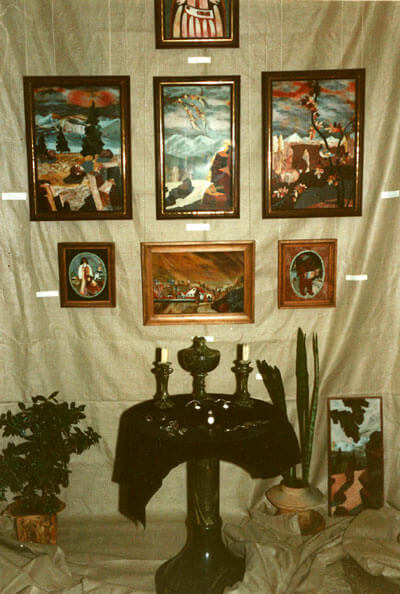
In projects for Florentine mosaics, I was looking for, in addition to traditional motives of flora, fauna (landscapes, animals), new themes. These include the theme of paganism in Siberia (shamanism), and the Christian theme (biblical stories), the theme of Altai and N.K. Roerich and his philosophy, the theme of Russian — folk culture, its folklore, rituals, traditions, both pagan and Christian.
First of all, for me a stone is not only a certain mineral, but a bearer of history — the secrets of its origin. This led me to such sacred themes of pre-Christian beliefs of Siberian pagans (hunters, cattle breeders, gatherers) shamanism with its rituals and folklore, who believed in the existence of various spirits: spirit is the master of the mountains, spirit is the master of the taiga, the spirit of wood, stone, etc. etc.
I want to add between the lines. Wikipedia says that the author of the Kolyvan plant logo is unknown. And the author is Andrey Andreevich Bitter. It’s good that I’m still alive. I am sending to your museum supporting documents and a page from the author’s archive catalog of Andrey Bitter’s works being prepared for printing. The modern trademark of the Kolyvan Stone Cutting Plant has been decorated today. In my opinion, unsuccessful. The sign was turned into a painting. Everything is confused in tone, it is poorly read, everything disappears from a distance. Here I will present my version in color. Description: The «Queen Vaza» and other graphic elements are depicted on a turquoise background in the dark green tone of Ravnevskaya jasper. The turquoise color is associated with the image of the phrase «Turquoise Katun» and is a particle of the azure color of the Altai coat of arms. The yellow color is gold, symbolizing the glory of the factory. The crown of the Russian Empire is the ownership of the plant in the past to the royal court of Russia. The word «KOLYVAN» is written in the Old Russian type «Poluustav» in free processing. The word «STONE CUTTING PLANT» is written in chopped bold type «Arial Black» — as if the letters were carved out of stone. The oval composition with a ribbon was built according to the canons of the past (17-18) centuries.
Here are the three 1991 versions that I presented and the color version:
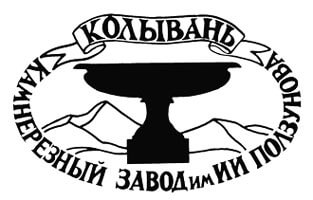
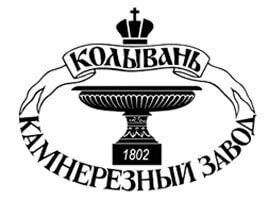
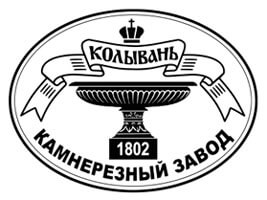

Andrey, what are your plans for the future, what are you working on now?
Now I am in Berlin, and I am working on a project for a unique heraldic museum in honor of the coat of arms of Berlin — the Bear standing on its hind legs. The name of the city «Berlin» comes from the German word Bär — «bear». My idea is simple but original. The museum will be underground, similar to the bear den in the Tirgarten park (Russian translation: Animal Garden).
I want to tell you a little secret. I am working on a project for a tourist cluster «Mountain Kolyvan.» In the process, I discovered one very interesting fact.
From the coat of arms of the Altai Territory, an image of the Kolyvan colossal «Queen — Vaz» of green-wavy jasper from the Revnevsky deposit looks at us, in the upper part of the coat of arms there is a blast furnace of the 18th century against the background of a landscape. The situation in the upper part reminds me of the well-known landscape of the Kolyvan stone-cutting plant. On the left, on the bank of the Belaya Zavodskaya Gora River, on the right, a mountain covered with forest (the so-called Borok), and between them since 1729 there was A. Demidov’s first copper smelter in Altai with 4-5 blast furnaces of the 18th century and a dam with a water wheel, which set in motion the bellows to blow air in the oven. (Conclusion of the author of the project. See photo below). The furnaces stood where the Colossal building now stands, in which the «Queen of Vaz» was made. Perhaps, the coat of arms of the Altai Territory depicts Kolyvan, the ancestor of ore and stone-cutting business in Altai. And this is not surprising, at the beginning of the 18th century Kolyvan was the main industrial center in Altai, moreover densely populated, before the decision to move the ore-smelting furnaces to the Barnaulka River to the city of Barnaul in the Bulygino region in 1744. I will note the successful decision by an unknown artist of the upper part of the coat of arms. forest-mountain, you need oxygen-air, and to reach the melting point you need a lot of air, it can be pumped by water through a water wheel. All these 5 elements: furnace, ore, wood, air, water are necessary at that time to melt metal. All these elements are displayed at the top of the coat of arms of the Altai Territory.
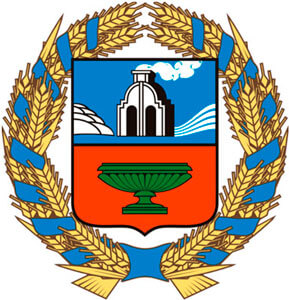
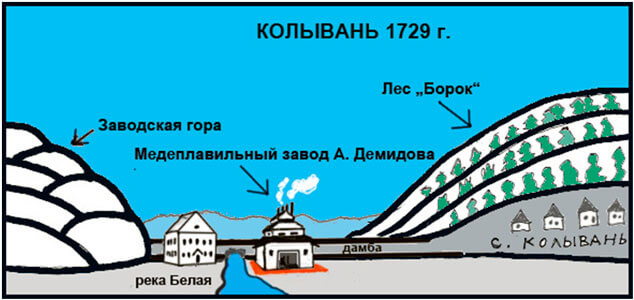
I suppose that the author of the Altai coat of arms was well aware of the Kolyvan landscapes, a feature of bizarre rocks made of huge cobblestones in Gornaya Kolyvan. Therefore, I decided to get acquainted with the works of artists of the 19th century, in order to understand how they depicted the landscape, and specifically, the rocks and forest of mountain Kolyvan. The most interesting in this regard turned out to be Pavel Mikhailovich Kosharov, an artist from Tomsk, who was invited as a draftsman on an expedition to Altai in 1856. Brought from the expedition a large folder of nature sketches.
This is how the artist depicted the structure of the Kolyvan stones and rocks.
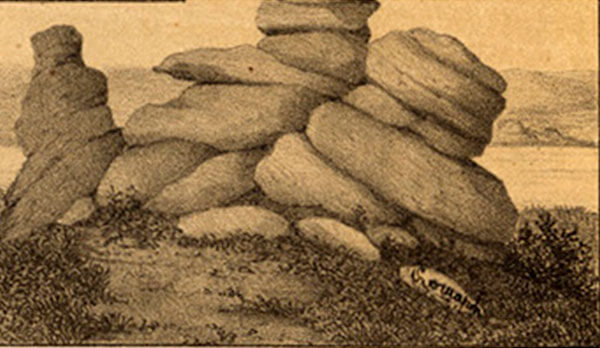
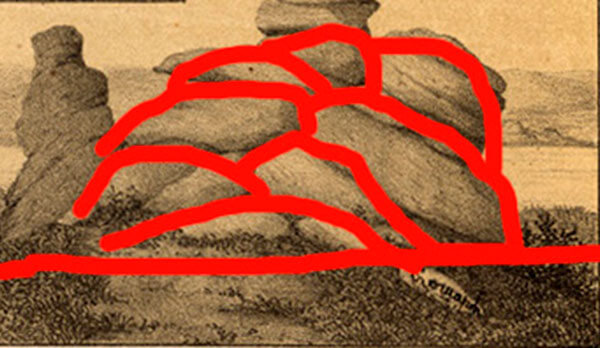
This is how the artist depicted the forest with waves.
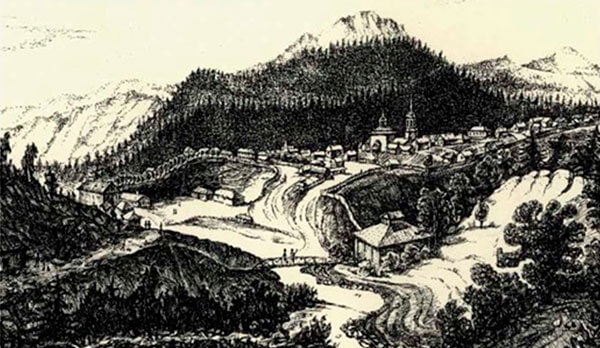
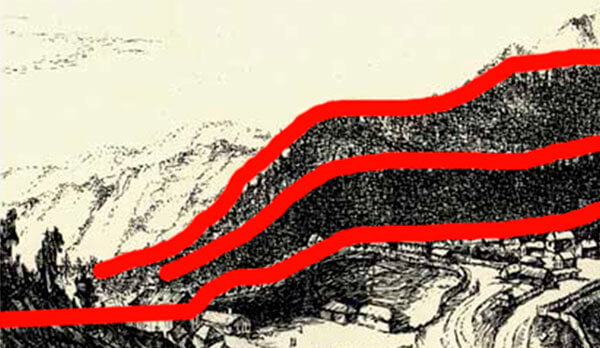
Perhaps we know little about the coat of arms of the Altai Territory
The coat of arms of the Altai Territory was adopted in the law «On the Coat of Arms of the Altai Territory» on May 25, 2000 by a session of the Regional Council of People’s Deputies. He is only 16 years old. Altai Territory, as a subject of the Russian Federation, was formed on September 28, 1937. You are right, the description of the coat of arms is very poor. We understand where the symbol of the «Queen of the vases» comes from. But the upper part of the coat of arms is the symbol of Barnaul, it was taken from the coat of arms of the capital of the Altai Territory.
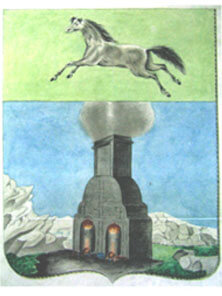
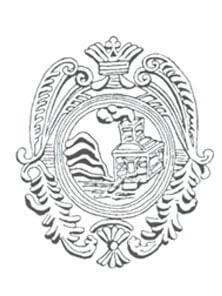
The coat of arms of Barnaul was approved on May 8, 1846. Its basis may have been taken from the seal of the master of Barnaul. The author is not known (Vadim Borodaev, Arkady Kontev «Historical Atlas of the Altai Territory» p. 87 Barnaul ABC 2006).
In my opinion, here is the painting «Kolyvan Lapidary Factory in the Altai Mountains» is the original source, painted on a lithographic stone and printed by the printing house of Mikhailov and Makushin.
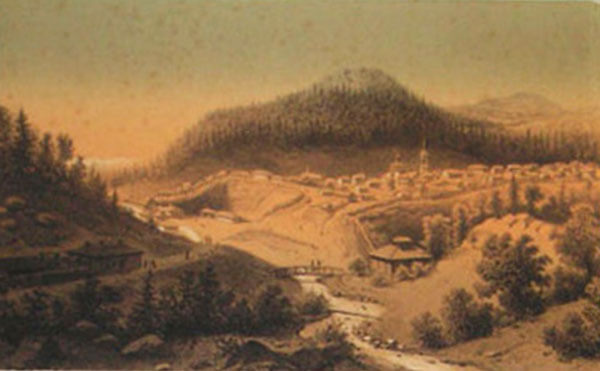

What I want to add. The perspective composition of the painting is built from a point called «Bird Flight«. This suggests that the picture was not made directly from nature, but from several full-scale sketches. I, as an artist, can tell where P.Kosharov’s sketches came from. The point from which the village and the factory are depicted is a mountain on the left at the level of the Church of the Ascension of Christ, crossing the bridge and rising to this level, other full-scale foreground sketches were made from the floodplain of the Belaya River, from where neither the village nor the factory is visible, the area is for me is very familiar. I suppose that there are or existed hiking drawings made during the expeditions by P. Kosharov. Combining these sketches and his impressions, Pavel created a gorgeous lithograph about Kolyvan. Moreover, this picture has the widest coverage of visible objects. All other zinc or copper engravings are secondary. However, they are cropped, not all objects on the edges are included.
Each artist has his own techniques to transform reality in the image of his paintings. For a serious study of engravings, you need to have more material, names of engravings, names of artists, dates of execution. We do not know who copied the Kolyvan Grinding Factory from whom. Or is it the hand of one artist who made several variations. But I do not have this opportunity. But this is one of the ways to determine authorship. All the same, this is the coat of arms of Altai.
If possible, you can publish my guesses on my behalf in the local press or in Kuryinskaya. I wonder what people think about it. It is worth knowing, since the description of the coat of arms of Altai on the website of the regional administration is empty and incomplete.
In conclusion, I would like to take this opportunity to say hello to my friends, stone-cutters Kolyvani !!!
Best regards, Andrey Bitter.
Thank you very much, Andrey. For responding to our request to describe such a wonderful exhibit. That you have shared your plans with us. We look forward to further cooperation, and we look forward to your visit!
This is how I met a wonderful person, with his interesting work. Since that time, we have been in constant contact with Andrey Bitter. He is not only a wonderful artist, he is a wonderful friend and a good comrade. For my family, he is not only a friend, he is our «Santa Claus» for our son. I really like the artwork of Andrey Bitter. I enjoy using them in 3D rendering. They fit into any interior. Visit the sites and pages on Andrey Bitter’s social networks. You will immerse yourself in an interesting world.
Respectfully yours and your business.
Contact me in a way convenient for you

MENU
- Home
- About Me
- My History
- My Articles
- My 3D Works
NEWS
- Scammers online
- 360 Virtual Exhibition
- Andrey Bitter
CONTACTS
- +7 (964) 080 9662
- arkady.kondratenko@gmail.com
Share on facebook
Share on vk
Share on odnoklassniki
Share on twitter
Share on linkedin

